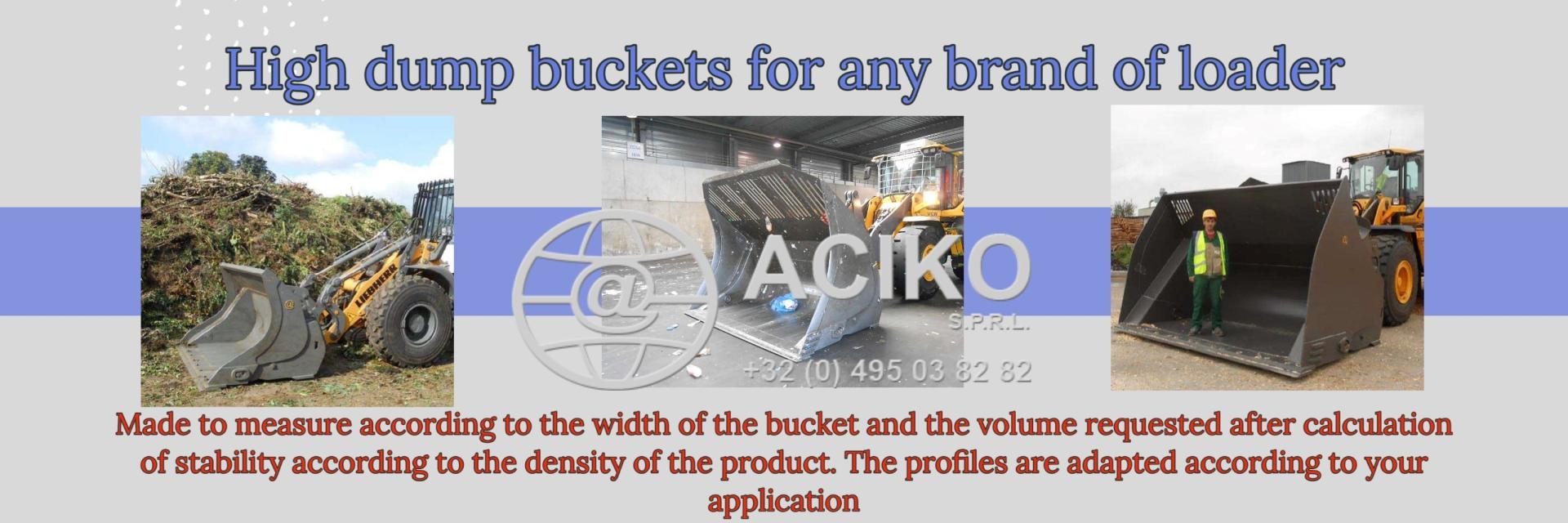R.E.News International-ECHA updated PFAS restriction proposal – What it means for construction equipment from lubricants to machinery applications
 31/10/25-FR-English-NL-footer
31/10/25-FR-English-NL-footer
PFAS : l’ECHA affine sa proposition de restriction – Quel avenir pour les équipements de construction ?
 Image-R.E.News©
Image-R.E.News©
De la lubrification aux systèmes de climatisation, l’industrie s’adapte à une transition complexe.
Une nouvelle étape vient d’être franchie dans le vaste chantier réglementaire européen sur les substances per- et polyfluoroalkylées, plus connues sous le nom de PFAS. L’Agence européenne des produits chimiques (ECHA) a publié la version actualisée de sa proposition de restriction dans le cadre du règlement REACH, l’une des mesures les plus ambitieuses jamais envisagées en matière de gestion chimique.
Derrière ces milliers de pages techniques se cache un enjeu considérable : plus de 10 000 substances sont concernées, avec des impacts majeurs sur des secteurs stratégiques — parmi eux, la construction et les équipements industriels.
PFAS : des substances persistantes, au cœur des performances industrielles
Utilisés depuis des décennies pour leurs propriétés uniques – résistance à la chaleur, à la friction et aux agents chimiques – les PFAS ont trouvé leur place dans d’innombrables applications. Dans le monde de la construction, on les retrouve dans les lubrifiants haute performance, les joints d’étanchéité, les roulements, les pompes, ou encore dans les systèmes de climatisation et de réfrigération.
Mais cette polyvalence a un coût : ces composés, quasiment indestructibles dans l’environnement, s’accumulent dans les sols, les eaux et les organismes vivants, suscitant une préoccupation croissante.
Trois scénarios de restriction à l’étude
L’ECHA évalue aujourd’hui trois pistes réglementaires :
RO1 – Interdiction totale : applicable 18 mois après l’entrée en vigueur, elle permettrait une réduction de 96 % des émissions, mais au prix d’un impact économique massif.
RO2 – Interdiction avec dérogations temporaires : une approche jugée plus équilibrée, offrant jusqu’à 83 % de réduction des émissions.
RO3 – Utilisation encadrée avec limites d’émission strictes : autorisant la production sous conditions, avec des seuils inférieurs à 0,01 %.
C’est le scénario RO2, combinant interdiction et dérogations ciblées, qui semble aujourd’hui privilégié par les autorités et l’industrie.
Des dérogations pour les applications critiques
L’ECHA reconnaît que certains usages restent indispensables à court terme, faute d’alternatives viables.
Ainsi, des dérogations allant jusqu’à 13,5 ans sont envisagées pour :
les lubrifiants industriels et professionnels utilisés dans des conditions extrêmes, comme celles rencontrées dans les engins de chantier ;
les composants mécaniques (joints, garnitures, roulements, pompes) où les PFAS garantissent la sécurité et la durabilité ;
les gaz réfrigérants employés dans les systèmes HVACR et les véhicules industriels.
Les entreprises concernées devront toutefois mettre en place des plans de gestion des PFAS et des obligations de reporting, afin de suivre les émissions et de documenter les progrès vers la substitution.
Un impact direct sur la construction et les machines hors route
Les fabricants d’équipements de construction sont en première ligne. Selon l’évaluation du CECE (Comité européen des équipements de construction), les engins tels que pelles, grues, bulldozers ou chariots élévateurs entrent dans la catégorie des « véhicules non routiers », et bénéficieraient donc d’une dérogation de 13,5 ans pour l’usage de réfrigérants fluorés.
De même, les lubrifiants à base de PFAS – essentiels au fonctionnement sûr des moteurs et des systèmes hydrauliques soumis à des contraintes extrêmes – disposeront d’une période de transition de cinq ans après l’entrée en vigueur du règlement.
Mais ces marges de manœuvre ne sont que temporaires. L’industrie devra accélérer la recherche d’alternatives capables d’assurer le même niveau de performance et de fiabilité.
Les prochaines étapes
Le processus réglementaire se poursuivra jusqu’à 2026. Le Comité d’évaluation des risques (RAC) et le Comité d’analyse socio-économique (SEAC) finaliseront leurs avis d’ici fin 2025, avant une consultation publique au premier semestre 2026. Les recommandations finales seront ensuite transmises à la Commission européenne pour décision.
En attendant, le CECE, en tant que partenaire accrédité de l’ECHA, s’engage à accompagner les fabricants dans la compréhension, l’adaptation et la mise en œuvre des futures obligations.
Vers une transition progressive et responsable
Si l’interdiction des PFAS marque un tournant pour l’industrie européenne, elle ouvre aussi la voie à une nouvelle ère d’innovation. Dans un secteur comme la construction, où la fiabilité mécanique et la sécurité priment, la transition devra être progressive, guidée par la recherche, la coopération et le réalisme.
Entre impératifs environnementaux et exigences techniques, la route vers des machines « zéro PFAS » s’annonce longue, mais nécessaire.
NJC.© Info CECE - Committee for European Construction Equipment; CEMA aisbl - European Agricultural Machinery Industry Association
--------------------------------------------------------------------------------------------------------------
 31/10/25-English
31/10/25-English
PFAS: ECHA Refines its Restriction Proposal – What Future for Construction Equipment ?
 Image-R.E.News©
Image-R.E.News©
From lubrication to air conditioning systems, the industry is adapting to a complex transition.
A new step has just been taken in the vast European regulatory project concerning per- and polyfluoroalkyl substances, better known as PFAS. The European Chemicals Agency (ECHA) has published the updated version of its restriction proposal under the REACH regulation, one of the most ambitious measures ever considered in chemical management.
Behind these thousands of technical pages lies a considerable challenge: more than 10,000 substances are affected, with major impacts on strategic sectors – including construction and industrial equipment.
PFAS: Persistent Substances at the Heart of Industrial Performance
Used for decades for their unique properties – resistance to heat, friction, and chemical agents – PFAS have found their place in countless applications. In the construction world, they are found in high-performance lubricants, seals, bearings, pumps, and in air conditioning and refrigeration systems.
But this versatility comes at a cost: these compounds, virtually indestructible in the environment, accumulate in soils, water, and living organisms, causing growing concern.
Three Restriction Scenarios Under Consideration
ECHA is currently evaluating three regulatory options:
RO1 – Total ban: applicable 18 months after entry into force, it would allow a 96% reduction in emissions, but at the cost of a massive economic impact.
RO2 – Ban with temporary derogations: an approach considered more balanced, offering up to an 83% reduction in emissions.
RO3 – Controlled use with strict emission limits: authorizing production under certain conditions, with thresholds below 0.01%. It is the RO2 scenario, combining a ban with targeted exemptions, that currently seems to be favored by the authorities and the industry.
Exemptions for critical applications
The ECHA acknowledges that some uses remain essential in the short term, due to a lack of viable alternatives.
Thus, exemptions of up to 13.5 years are being considered for:
industrial and professional lubricants used in extreme conditions, such as those encountered in construction machinery;
mechanical components (seals, gaskets, bearings, pumps) where PFAS guarantee safety and durability;
refrigerant gases used in HVACR systems and industrial vehicles.
However, the companies concerned will have to implement PFAS management plans and reporting obligations in order to monitor emissions and document progress towards substitution.
A direct impact on construction and off-road machinery
Construction equipment manufacturers are on the front lines. According to the assessment by the CECE (European Committee for Construction Equipment), machines such as excavators, cranes, bulldozers, and forklifts fall into the category of "non-road vehicles," and would therefore benefit from a 13.5-year exemption for the use of fluorinated refrigerants.
Similarly, PFAS-based lubricants – essential for the safe operation of engines and hydraulic systems subjected to extreme stresses – will have a five-year transition period after the regulation comes into force.
But these margins for maneuver are only temporary. The industry will have to accelerate the search for alternatives capable of ensuring the same level of performance and reliability.
Next steps
The regulatory process will continue until 2026. The Risk Assessment Committee (RAC) and the Socio-Economic Analysis Committee (SEAC) will finalize their opinions by the end of 2025, before a public consultation in the first half of 2026. The final recommendations will then be submitted to the European Commission for a decision. In the meantime, CECE, as an accredited partner of ECHA, is committed to supporting manufacturers in understanding, adapting to, and implementing future obligations.
Towards a gradual and responsible transition
While the ban on PFAS marks a turning point for European industry, it also opens the way to a new era of innovation. In a sector like construction, where mechanical reliability and safety are paramount, the transition will have to be gradual, guided by research, cooperation, and realism.
Between environmental imperatives and technical requirements, the road to "zero PFAS" machinery promises to be long, but necessary.
NJC.© Info CECE - Committee for European Construction Equipment; CEMA aisbl - European Agricultural Machinery Industry Association
------------------------------------------------------------------------------------------------------------------
 31/10/25-NL
31/10/25-NL
PFAS: ECHA verfijnt beperkingsvoorstel – Welke toekomst voor bouwmachines ?
 Image-R.E.News©
Image-R.E.News©
Van smeermiddelen tot airconditioningsystemen, de industrie past zich aan een complexe transitie aan.
Een nieuwe mijlpaal is zojuist bereikt in het omvangrijke Europese regelgevingsproject rond per- en polyfluoralkylstoffen, beter bekend als PFAS. Het Europees Agentschap voor chemische stoffen (ECHA) heeft de bijgewerkte versie van zijn beperkingsvoorstel in het kader van de REACH-verordening gepubliceerd, een van de meest ambitieuze maatregelen ooit overwogen op het gebied van chemicaliënbeheer.
Achter deze duizenden technische pagina's schuilt een aanzienlijk probleem: het gaat om meer dan 10.000 stoffen, met grote gevolgen voor strategische sectoren, waaronder de bouw en industriële apparatuur.
PFAS: persistente stoffen vormen de kern van industriële prestaties
PFAS worden al tientallen jaren gebruikt vanwege hun unieke eigenschappen – bestendigheid tegen hitte, wrijving en chemische stoffen – en hebben hun weg gevonden naar talloze toepassingen. In de bouwsector zijn ze te vinden in hoogwaardige smeermiddelen, afdichtingen, lagers, pompen en zelfs airconditioning- en koelsystemen.
Maar deze veelzijdigheid heeft een prijs: deze verbindingen, die vrijwel onverwoestbaar zijn in het milieu, hopen zich op in de bodem, het water en levende organismen, wat tot toenemende bezorgdheid leidt.
Drie beperkingsscenario's in overweging
ECHA evalueert momenteel drie regelgevingsopties:
RO1 – Totaalverbod: van toepassing 18 maanden na inwerkingtreding, zou een emissiereductie van 96% mogelijk maken, maar ten koste van een enorme economische impact.
RO2 – Verbod met tijdelijke vrijstellingen: een aanpak die als evenwichtiger wordt beschouwd en tot 83% emissiereducties oplevert.
RO3 – Gecontroleerd gebruik met strikte emissiegrenswaarden: productie onder bepaalde voorwaarden toestaan, met drempelwaarden onder 0,01%.
Het RO2-scenario, dat een verbod combineert met gerichte vrijstellingen, lijkt momenteel de voorkeur te genieten van autoriteiten en de industrie.
Vrijstellingen voor kritische toepassingen
ECHA erkent dat bepaalde toepassingen op korte termijn essentieel blijven vanwege een gebrek aan haalbare alternatieven. Daarom worden vrijstellingen tot 13,5 jaar overwogen voor:
industriële en professionele smeermiddelen die worden gebruikt onder extreme omstandigheden, zoals die in bouwmachines;
mechanische componenten (afdichtingen, voeringen, lagers, pompen) waar PFAS veiligheid en duurzaamheid garanderen;
koelmiddelen die worden gebruikt in HVACR-systemen en industriële voertuigen.
De betrokken bedrijven zullen echter PFAS-beheerplannen en rapportageverplichtingen moeten implementeren om emissies te volgen en de voortgang naar vervanging te documenteren.
Een directe impact op bouw- en terreinmachines
Fabrikanten van bouwmachines staan in de frontlinie. Volgens de beoordeling van de CECE (European Construction Equipment Committee) vallen machines zoals graafmachines, kranen, bulldozers en heftrucks onder de categorie "terreinvoertuigen" en zouden ze daarom profiteren van een vrijstelling van 13,5 jaar voor het gebruik van gefluoreerde koelmiddelen.
Evenzo geldt voor smeermiddelen op basis van PFAS – essentieel voor de veilige werking van motoren en hydraulische systemen die aan extreme belasting worden blootgesteld – een overgangsperiode van vijf jaar na de inwerkingtreding van de verordening.
Maar deze mazen in de wet zijn slechts tijdelijk. De industrie zal de zoektocht naar alternatieven die dezelfde prestaties en betrouwbaarheid kunnen garanderen, moeten versnellen.
Volgende stappen
Het regelgevingsproces loopt tot 2026. Het Risicobeoordelingscomité (RAC) en het Comité voor Sociaaleconomische Analyse (SEAC) zullen hun adviezen eind 2025 afronden, voorafgaand aan een openbare raadpleging in de eerste helft van 2026. De definitieve aanbevelingen zullen vervolgens ter besluitvorming aan de Europese Commissie worden voorgelegd.
In de tussentijd zet CECE zich, als geaccrediteerde partner van ECHA, in om fabrikanten te ondersteunen bij het begrijpen, aanpassen en implementeren van de toekomstige verplichtingen.
Op weg naar een geleidelijke en verantwoorde transitie
Hoewel het verbod op PFAS een keerpunt markeert voor de Europese industrie, effent het ook de weg voor een nieuw tijdperk van innovatie. In een sector als de bouw, waar mechanische betrouwbaarheid en veiligheid voorop staan, moet de transitie geleidelijk verlopen, gestuurd door onderzoek, samenwerking en realisme. Tussen milieu-eisen en technische eisen belooft de weg naar "PFAS-vrije" machines lang, maar noodzakelijk te zijn.
NJC. © Info CECE - Committee for European Construction Equipment; CEMA aisbl - European Agricultural Machinery Industry Association
-------------------------------------------------------------------------------------------------------------------
Date de dernière mise à jour : 30/10/2025
















